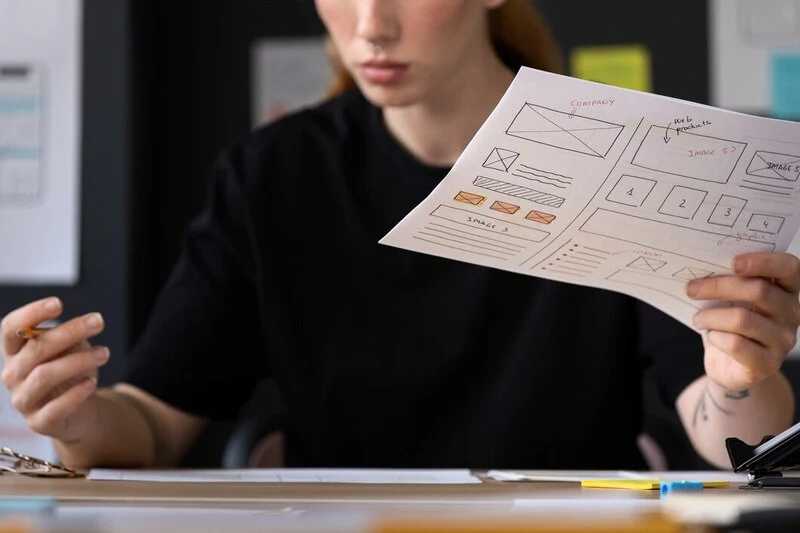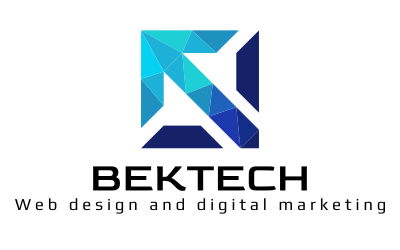Gen Z: Reshaping the UX Landscape – A Glimpse into the Future

The digital world is changing quickly because technologies are changing, and people’s expectations are also changing. This changing world gives UX designers both problems and chances, and they have to do more than just adapt. They have to plan ahead. Today, we’re going to talk about the future of UX design. We’ll look at the main trends that are shaping the field and give you the tools you need to get around in this exciting new area.
A Look into the Future: Gen Z is Changing the UX Scene
Gen Z (people born between 1997 and 2012) has a huge impact on UX trends because they grew up with technology. Their unique experiences and values are changing the user landscape, and it’s important to know what they want so you can make solutions that will work in the future.
Their unique experiences and values are shaping the user landscape, and understanding their preferences is crucial for designing successful solutions for the future.
Future of UX design and redefining User Expectations in the Gen Z Era
Beyond Apps and Screens: Gen Z wants omnichannel experiences that work seamlessly across all devices and platforms. Augmented reality (AR) and virtual reality (VR) have a lot of potential in this area.
People who take part, not just consumers: This generation wants to be personalized and work together to make things. It will be important to make design tools more open to everyone and encourage user feedback.
Gen Z’s way of life is changing the way interfaces work in the future: Sustainability, welcoming everyone, and moral concerns are all woven into what they expect. Design that is socially aware will be very important.
What will people need UX designers for in the future?
Because of these changes, there will likely be a lot more demand for UX designers

Specialization for the future of UX design: More and more roles will focus on specific areas, such as AR/VR, voice interfaces, and ethical design.
Collaboration around the world: Working from home and having a diverse team will be normal, so you’ll need to be able to adapt and understand other cultures.
Lifelong Learning: Because new ideas come up so quickly, people need to keep learning and getting better at what they do.
Automation and Intelligence: Using AI to Make Things Easier and More Customized
Deep changes are happening in UX design because of artificial intelligence (AI)
Automation for the future of UX design: Robots will do boring, repetitive tasks like analyzing user research and making prototypes, so designers can think about big picture ideas.
Individualization: AI algorithms can customize user journeys based on their likes and dislikes and how they act, making each experience unique and custom.
Accessibility for the future of UX design: AI-powered tools can help make interfaces that work for people with a wide range of needs and abilities, which promotes acceptance.
But it’s important to keep in mind
The Human Touch Lasts: Even though AI automates tasks, people will always be important. It will be even more important to have empathy, think critically, and be creative.
Concerns about ethics: Concerns about bias, transparency, and user privacy must be taken into account when AI is developed and used in UX in a responsible way.
Future of UX design tips
The Voice Revolution
Using Conversational Interfaces to Make Interactions Smooth
Voice-activated technologies are becoming more popular, which means that conversational user interface (CUI) is here to stay:
Intuitive Interactions: Voice lets you interact naturally and without using your hands, which is great for accessibility and doing more than one thing at once.
Personalized Conversations: Chatbots that are powered by AI can change how they answer based on the user’s situation and mood, which makes connections and engagement stronger.
Beyond Assistants
CUI can be used for more than just smart speakers. It can also be used to change areas like customer service, education, and healthcare.
Problems and things to think about:
Natural Language Processing (NLP)
To make sure communication goes smoothly, you need advanced NLP skills to understand and respond correctly.
Accessibility in the future of UX design
Voice interfaces must work for people who have trouble hearing and a variety of accents.
Looking ahead to the future of augmented and mixed reality UX
XR technologies like AR and VR are about to change UX by making the difference between the real and virtual worlds less clear:
Immersive Experiences
AR and VR provide interactive, multisensory experiences that make learning and being interested more fun.
Interactions in Space
When designing for 3D spaces, you need to use new ways of thinking and focus on how your body naturally moves and how your hands naturally move.
Contextual Awareness
Augmented reality (AR) brings digital information into the real world, so the user needs to know about their surroundings and context.
Problems and things to think about:
Ethical Design
Things like privacy, data security, and possible effects on society need to be carefully thought through.
The Touch of a Person Lasts
Getting the right mix of technology and emotionally-driven design
Even as technology changes, UX’s main focus stays on the user:
Emotionally Connected Experiences
Knowing and responding to users’ feelings will remain a cornerstone of setting yourself apart and building trust and loyalty in the future of UX design.
Empathy and Ethical Design
It is imperative to put the well-being of users first, use data responsibly, and make sure that all content is accessible.
Human-Centered AI
Using AI in an ethical way means keeping people involved and using its power to help human judgment, not replace it.
The ideas of Gen Z, the power of AI to change things, and immersive technologies will shape the exciting and complicated future of UX design.
The ideas of Gen Z, the power of AI to change things, and immersive technologies will shape the exciting and complicated future of UX design. But to get around in this world well, you need to do more than just accept these trends. You also need to deal with the problems and chances they bring up. Here are some important things to remember as you go:
Adopt a lifelong learning attitude
Because of how quickly new things come out, you need to keep learning and improving your skills. To stay relevant and able to change, keep up with new technologies, trends, and user behaviors.
Get used to being critical
Don’t let the newest tech trend fool you. Any tool or trend should be judged by how well it improves the user experience, taking into account things like accessibility and ethical issues.
Put working together first
Encourage engineers, data scientists, and marketing teams to work together with people from other fields to make experiences that are more complete. It is very important to communicate clearly and understand each other.
Focus on accessibility in the future of UX design
Design in a way that meets the needs and abilities of everyone. This includes cultural, cognitive, and linguistic differences as well as physical ones.
Support ethical design
Push for the safe creation and use of AI, putting privacy, openness, and fairness in algorithms at the top of the list.
Technology is a tool, not the end goal. Focus on experiences that put people first. Keep in mind that users want to connect, feel, and have meaningful interactions.
Drive change for the future of UX design

As a UX designer, you can make the digital future what it will be. Advocate for experiences that are moral, open to everyone, and focused on people. These experiences will help both users and society as a whole.
By knowing about these trends, being open to learning new things all the time, and putting ethics first, you can make a big difference in the future of UX design. Remember that technology shapes the possibilities, but it’s your focus on people that will make experiences truly meaningful and good for users.
In addition to the above, you might also want to look into the following areas for more information:
Frameworks for UX ethics
To help you make design decisions, get to know frameworks like EthiLens and the Google AI Principles.
Brand-new technologies: Look into things like quantum computing, the metaverse, and blockchain to see how they might affect UX.
Global design trends: Learn about UX trends in different cultures and regions to make sure your designs are appropriate for those cultures.
UX design has a bright future ahead of it. By getting the right information, skills, and values, you can play a big role in this exciting journey and help create a digital world that is not only new and innovative, but also fair, welcoming, and focused on the user.
We can say that the future of UX design is full of opportunities and challenges. As we move through this constantly changing world, it’s not enough to just know about the newest trends; we also need to know how to use them in an honest and responsible way.
Don’t forget that you’re not just a technician
you’re also an architect of user experiences. Support ongoing learning, promote inclusion, and put human-centered design first. Use your empathy to help you make choices, and use your creativity to find solutions that help users and society as a whole.
The digital world needs more than just tech experts. It needs passionate UX designers like you who want to make technology work for people instead of against them. So, go into the future with confidence, ready to create experiences that are not only new, but also meaningful, moral, and have a positive effect that lasts.
The trip starts now. Go out and plan the future you want to see.




